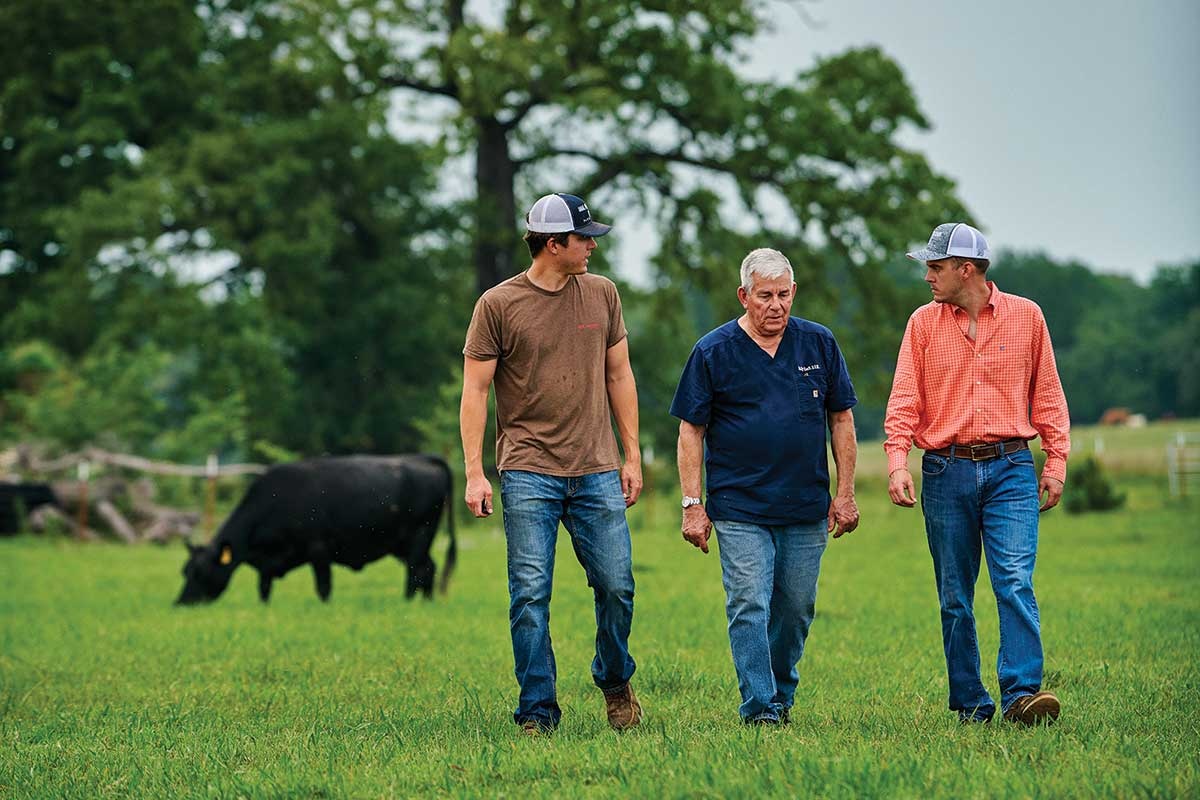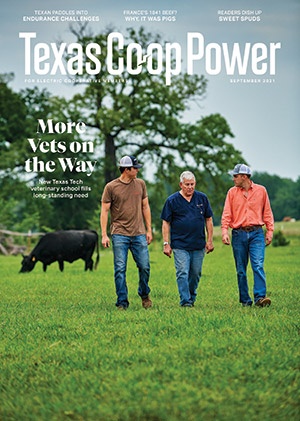Bethany Solomon Schilling still cringes when she hears the ring tone. The ring tone that years ago interrupted dinners, events and sleep to let her know there was an emergency at one of the Central Texas clinics where she worked as a veterinarian.
She grew up surrounded by animals on a ranch and earned a scholarship to help pay for her veterinary schooling. The field combined everything she loved: science, medicine and agriculture.
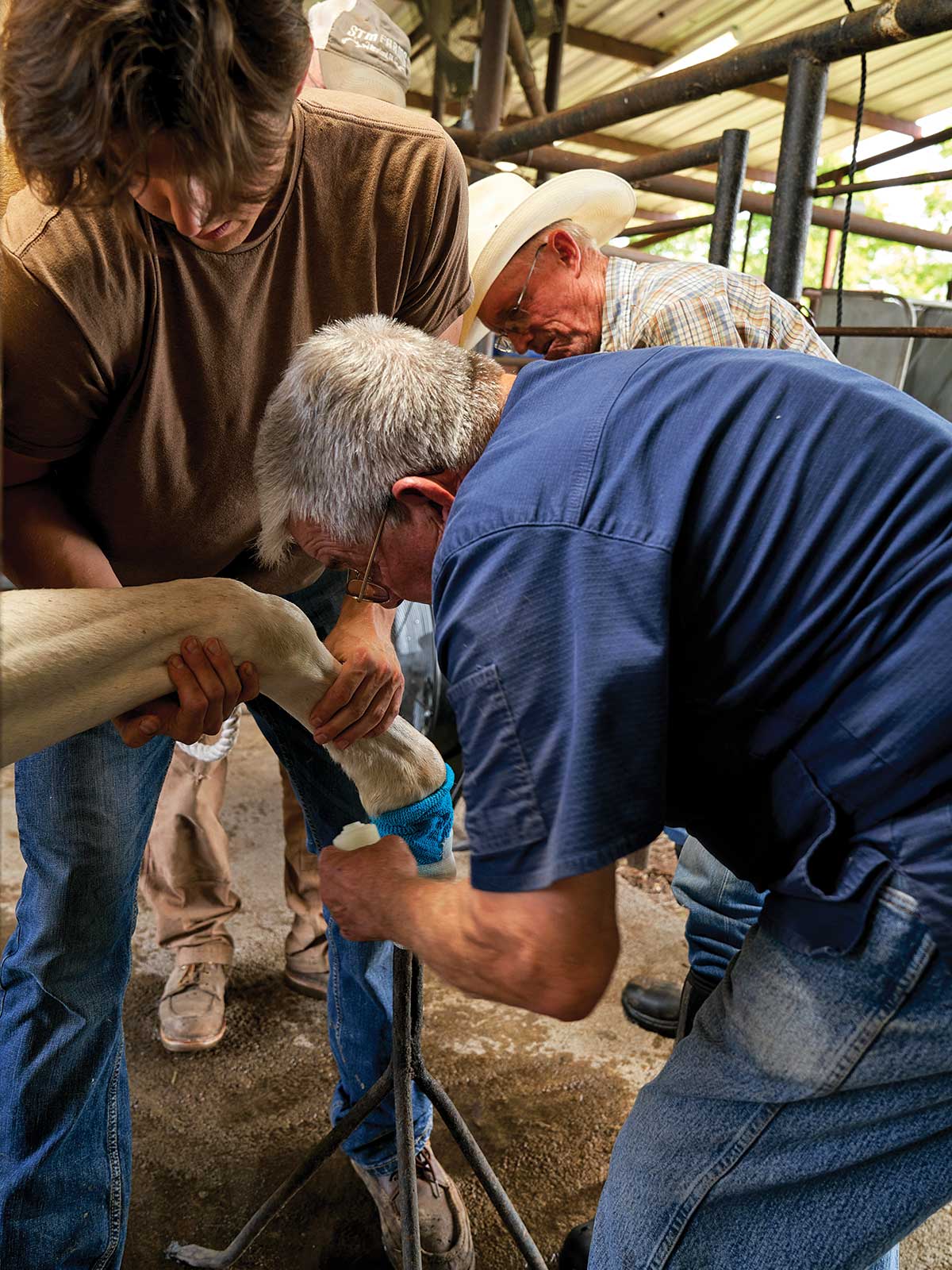
Paris veterinarian Wally Kraft, with help from his son Jack, wraps a quick-set cast on a horse. opposite As Texas Tech University graduates new vets, relief from long workdays could be on the horizon for rural vets like the Krafts.
Dave Shafer
But then Solomon Schilling went to work caring for animals at those clinics in Lockhart and Luling, where workweeks ran into weekends and that ring tone stretched workdays into nights. Gone were the “referral zebras” of her university’s teaching hospital, she said, replaced by the everyday rigors of mixed-animal veterinary medicine, where demand far outpaces supply in many parts of Texas, leading to burnout among vets.
“At some point you think, ‘Is this sustainable?’ ” Solomon Schilling said. She and her husband were trying to start a family, but working 50–60 hours a week made that a challenge. “I was like, ‘If we go into rural practice, we are never going to have a life.’ ”
Solomon Schilling and 31 other faculty members began reshaping that reality in August, when they welcomed the inaugural class to the Texas Tech University School of Veterinary Medicine in Amarillo—Texas’ first new vet school in more than a century. Decades in the making, Tech established the school with the specific intent of recruiting passionate students from small towns and forming them into career-ready practitioners prepared to help address the shortage of veterinarians, especially in rural Texas.
“There’s a high demand in Texas, but it’s not being met in these rural communities where we need them,” said Clayton Cobb, another professor. “That’s where Tech comes in.”
Texas counts 6,600 practicing veterinarians but needs 1,300 more to reach the national average for the state’s population, according to Tech. Fewer than 200 of those vets work exclusively on livestock in rural parts of the state that has nearly double the number of cattle of any other state and hundreds of thousands more horses and almost a million more goats than any other state.
But many Texas vets say a new veterinary school—especially one focused on rural students and underserved communities—is long overdue.
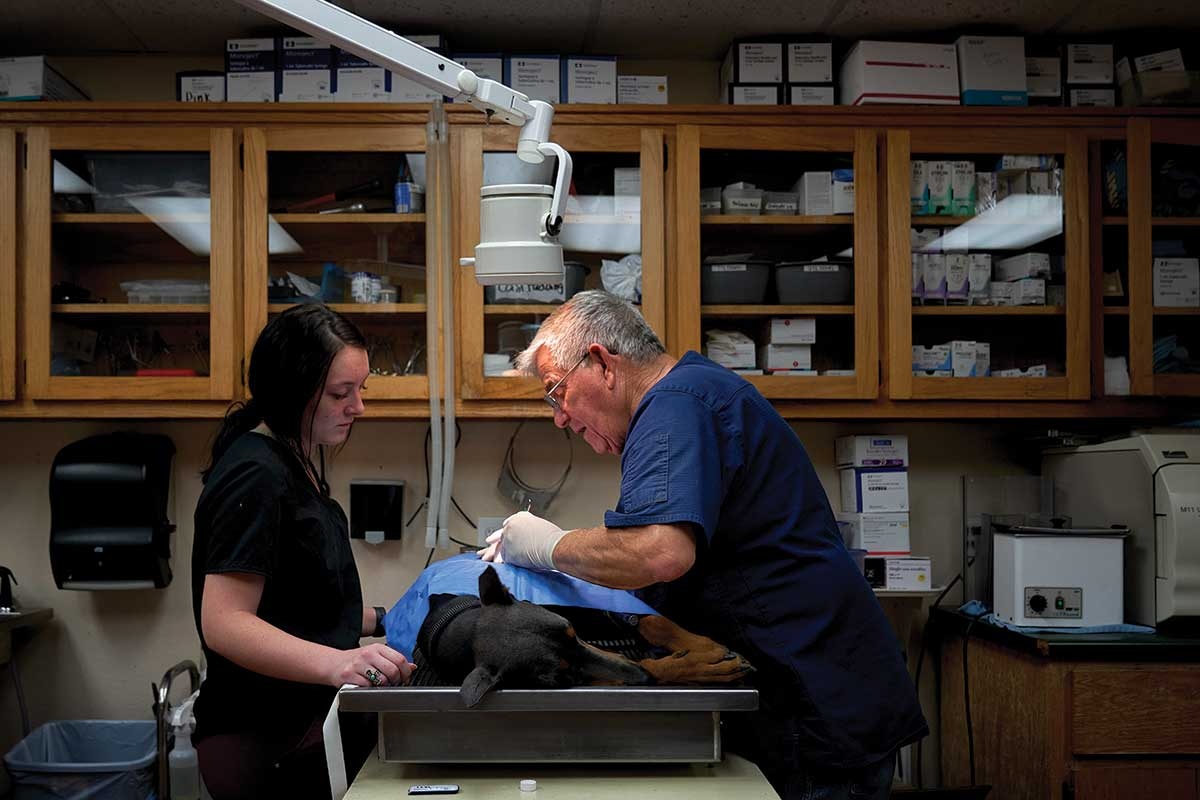
Kraft, assisted by vet tech Emily Odell, removes a benign tumor from a Doberman pinscher.
Dave Shafer
“If you’re going to select all the kids out of Houston, Dallas and places like that, you’ve got very little hope of getting very many of those to ever go out past those metropolitan areas,” said Kynan Sturgess, a Panhandle veterinarian whose clinic is served by Deaf Smith Electric Cooperative. “They didn’t grow up around farming and ranching; there’s no guarantee they’re going to stick around. But you’ve got a lot better shot of taking a kid from Dimmitt, Texas, and maybe expecting him to go back to some area like that.”
Sturgess is one of just four veterinarians permanently based in Deaf Smith County, where more than 600,000 cattle outnumber humans about 33 to 1. The Panhandle has the highest density of cattle in the country, but three veterinary schools in three other states are closer than Texas’ only other vet school—at Texas A&M University.
Sturgess has had to advertise openings at his Hereford clinic in other states—one reason he’s advocated for a school like Tech’s for years.
“The whole state, from a rural standpoint, is having problems,” he said. “I have colleagues all over the state that are constantly looking for somebody.”
About 40% of Texas’ working vets earned their degree outside the state; the rest went through Texas A&M University’s College of Veterinary Medicine & Biomedical Sciences—founded in 1916 and one of the best and largest vet schools in the nation.
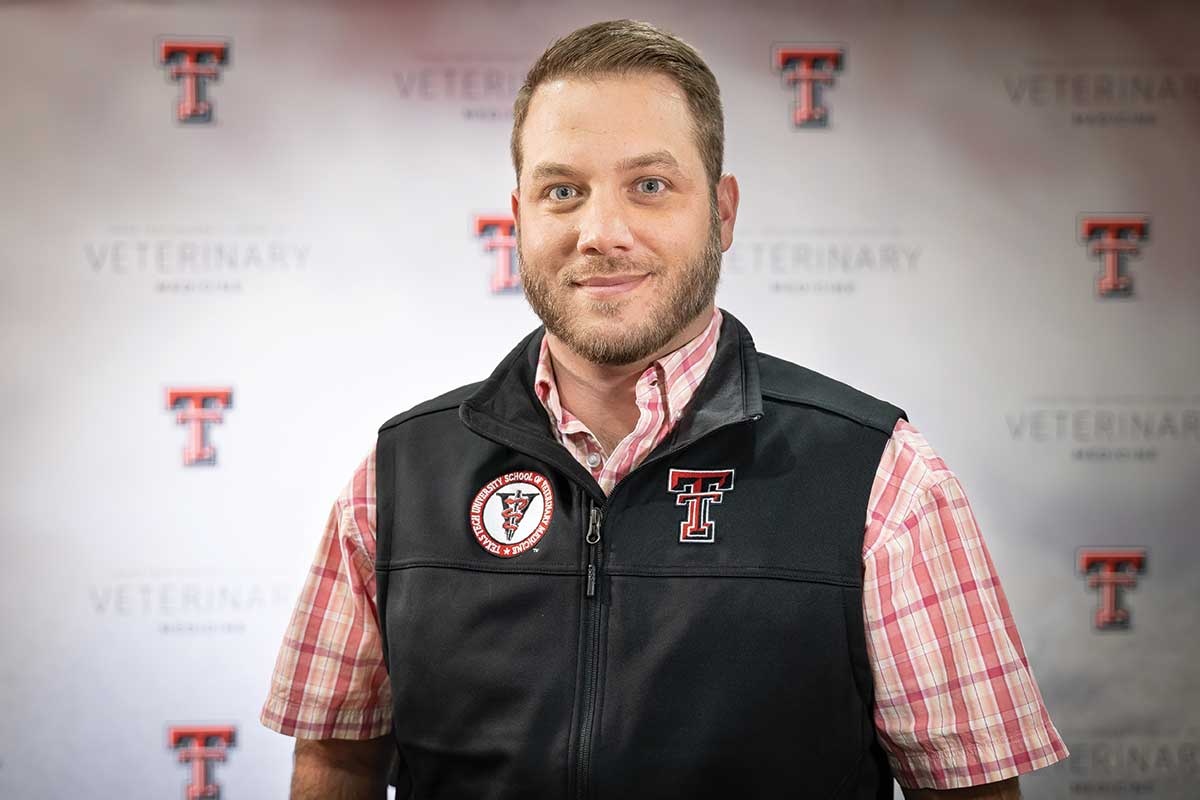
Clayton Cobb is thrilled that the veterinary school he advocated for as an undergrad is finally a reality—and that he gets to work there. “It’s a dream job,” he said. “I love practice, I love research, I love working with students—and this is the only job in the world where I get to do all those, and I get to do it for my alma mater.”
Courtesy TTUSVM
As the second school in the state, Tech has the advantage of a specialized focus. “We don’t have to cater to everybody,” Cobb said.
Cobb grew up on a ranch in Northeast Texas and as an undergraduate at Tech about 20 years ago, he advocated for a veterinary program before moving on to vet school at A&M. So when he heard about the Legislature including just that in the state’s 2019 budget, allocating $17.35 million in operational support for the program (which donors supplemented with $90 million for construction costs), he was thrilled. Then he got the call to come work there.
“When they said, ‘We’d like to extend you an offer. When do you think you could start?’ I told them, ‘Six hours and 36 minutes. Give me time to get there. We are starting today,’ ” Cobb said.
With firsthand experience in rural animal care, Cobb has tremendous respect for those who do it—and especially for Wally Kraft, his childhood vet, who still treats animals of all sizes at his Paris clinic.
“A slow day is kind of unusual,” said Kraft, 76, a member of Lamar Electric, who still pulls calves, sews up horses, and vaccinates and treats more and more dogs and cats as the Metroplex creeps toward the country. “We pretty much have to take care of everybody who walks in the front door. If you don’t love it, you’re not going to do it.”
Two of Kraft’s veterinarian sons are on their way to one day taking over his practice, but most of Texas’ aging vets don’t have that kind of security—even while demand swells. Texas added 4 million people since 2010—more than any other state—according to census data, but 41% of vets in rural Texas are older than 60.
“Everything has grown,” Sturgess said. “I’ve taken on more feedlots; I’ve got more horse clients and way more small animal clients.”
Tech is hoping to stem that tide using what it calls a distributed veterinary learning community to turn out well-rounded, practice-ready generalists. Unlike traditional vet schools like A&M, where fourth-year vet students practice at a teaching hospital, Tech students will do 4- to 6-week rotations at private practices across the state in their final year.
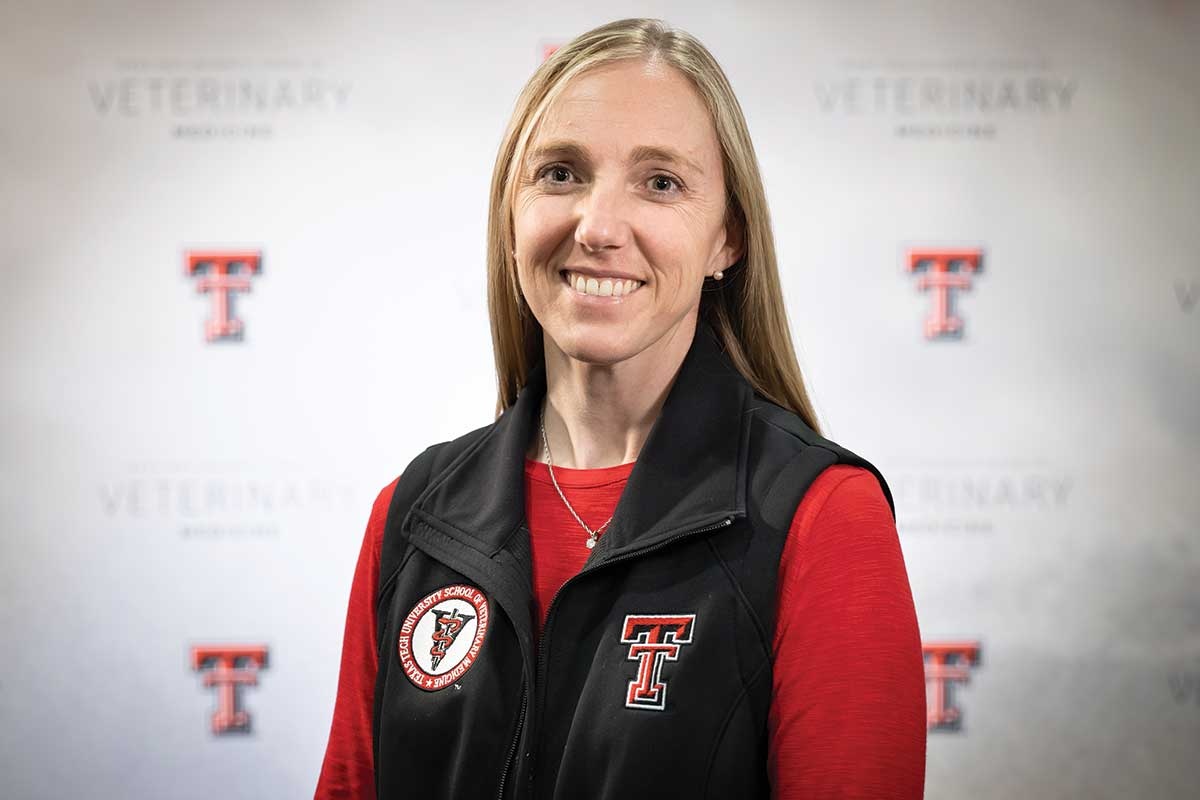
Bethany Solomon Schilling grew up on a ranch in Deaf Smith County and is proud to be back in the Panhandle to educate the next generation of veterinarians. “Being a founding faculty member and getting to start from scratch and build something is just exciting,” she said.
Courtesy TTUSVM
“If you want to go into dairy, we’ll send you to dairies.
If you want to go into feedlots, we’ll send you to feedlots,” Cobb said. It’s a way to immerse students in the life and lifestyle of rural animal care, preparing them for the everyday rigors and rewards of the job.
That’s part of what Solomon Schilling was missing from her own vet school experience.
“I felt very prepared intellectually but not for things that I saw day in and day out,” she said. “Communication, training, interpersonal relations, stress management, work-life balance, financial management … things like that are the reasons people leave the profession or leave practice. It’s not the medicine that runs them off.”
Tech’s model aims to turn out confident, competent vets who are ready for that late-night phone call—because they’ve already experienced it.
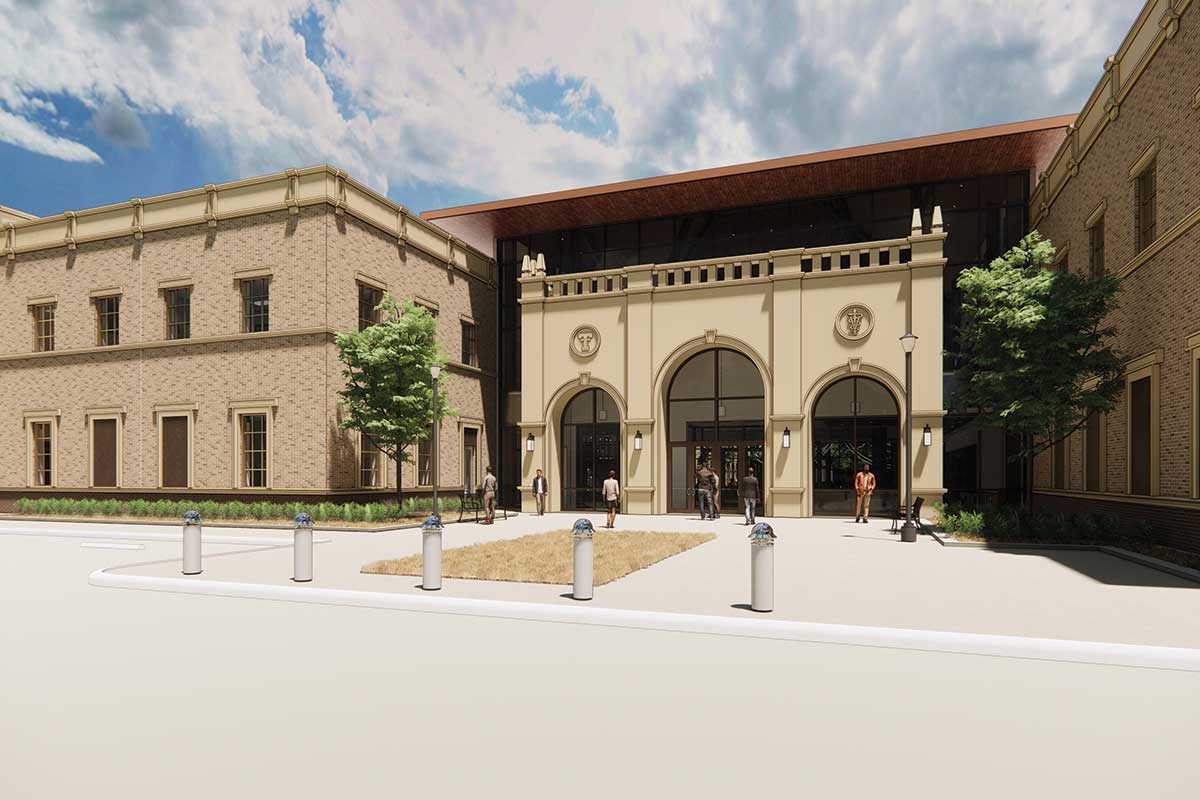
In August, Texas Tech welcomed the first 64 students to its Amarillo campus—the 33rd veterinary school in the country.
Courtesy TTUSVM
“When you’re at a teaching hospital, certain services will only see a handful of patients a day, whereas in a very busy private practice, you can see 25, 30 patients a day per doctor,” Solomon Schilling said. “It’s a lot more volume and a lot more exposure.”
The 64 students who comprise Tech’s first class started their studies in Amarillo at the newly completed School of Veterinary Medicine, which houses 185,000 square feet of labs, offices and classrooms. A large-animal clinical skills facility is about 2 miles northwest.
Access to the state-of-the-art facility won’t cost the class of 2025 as much as some schools. The average in-state veterinary medicine degree costs more than $200,000, according to the VIN Foundation, but Tech students will pay $88,000 for tuition (plus more for books and supplies). The hope is that saddling vets with less debt will allow them to work wherever they’re needed.
“A lot of people think we’re just raising country vets to work cows,” Cobb said. “That is not true at all. We could graduate our first four classes of veterinarians and send them all to El Paso and Laredo, and they would still be underserved communities.
“The people in those clinics and those communities out there are in desperate need. Nobody is really looking at them and trying to help them. That’s exactly the point of what we’re doing.”
